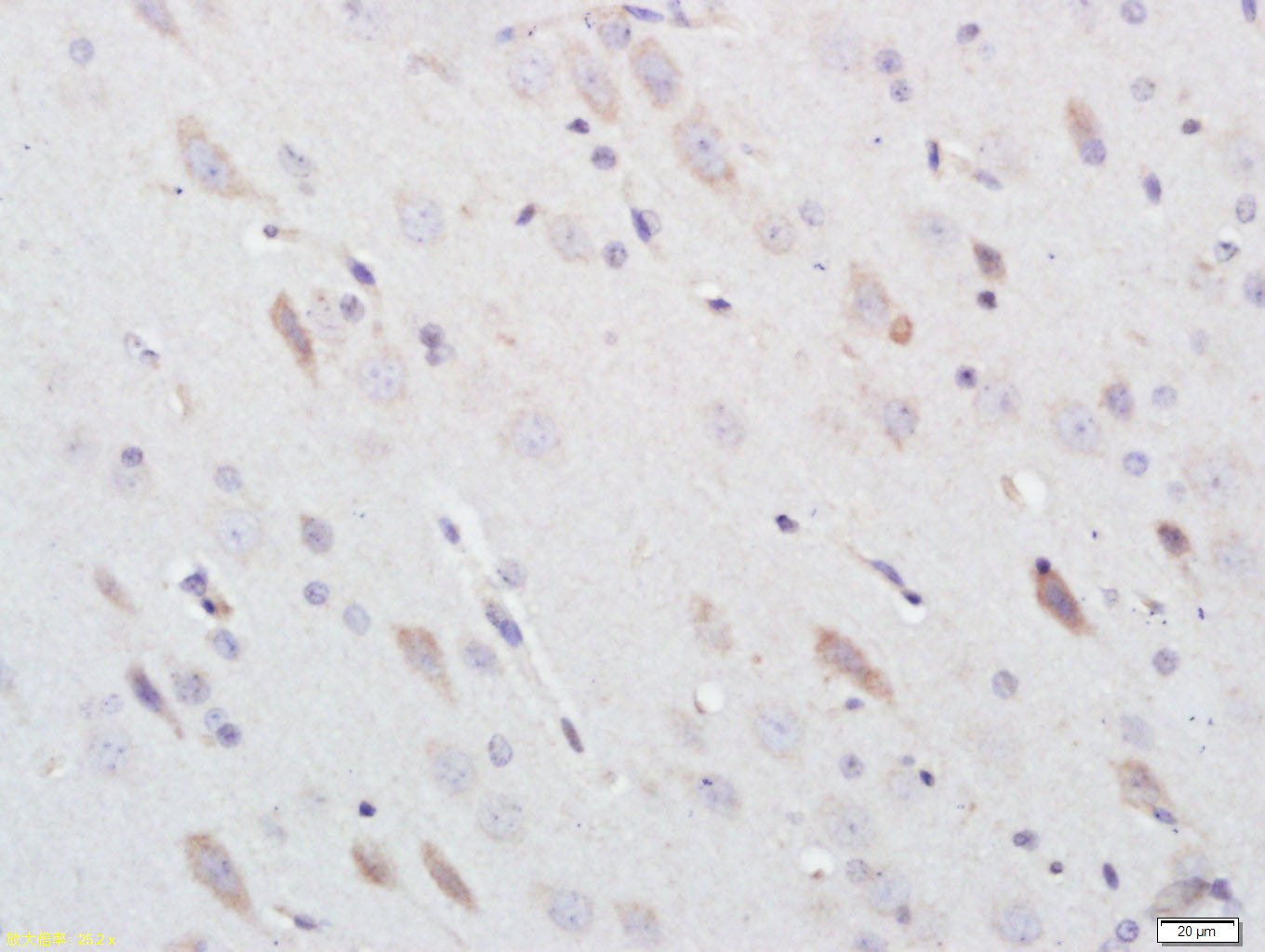购物车
全部删除  您的购物车当前为空
您的购物车当前为空
别名 酪氨酸硝基化, nTyr, NO tyrosine, nitro-Tyrosine, Nitrotyrosine, 3-Nitrotyrosine
Anti-3-Nitro-L-tyrosine Polyclonal Antibody 是一种 Rabbit 抗体,靶向 3-Nitro-L-tyrosine。Anti-3-Nitro-L-tyrosine Polyclonal Antibody 可用于 FCM,IF,IHC-Fr,IHC-P,WB。
Anti-3-Nitro-L-tyrosine Polyclonal Antibody 是一种 Rabbit 抗体,靶向 3-Nitro-L-tyrosine。Anti-3-Nitro-L-tyrosine Polyclonal Antibody 可用于 FCM,IF,IHC-Fr,IHC-P,WB。
| 规格 | 价格 | 库存 | 数量 |
|---|---|---|---|
| 50 μL | ¥ 1,170 | 5日内发货 | |
| 100 μL | ¥ 1,970 | 5日内发货 | |
| 200 μL | ¥ 2,795 | 5日内发货 |
| 产品描述 | Anti-3-Nitro-L-tyrosine Polyclonal Antibody is a Rabbit antibody targeting 3-Nitro-L-tyrosine. Anti-3-Nitro-L-tyrosine Polyclonal Antibody can be used in FCM,IF,IHC-Fr,IHC-P,WB. |
| 别名 | 酪氨酸硝基化, nTyr, NO tyrosine, nitro-Tyrosine, Nitrotyrosine, 3-Nitrotyrosine |
| Ig Type | IgG |
| 交叉反应 | Species independent |
| 验证活性 | 1. Tissue/cell: rat brain tissue; 4% Paraformaldehyde-fixed and paraffin-embedded; Antigen retrieval: citrate buffer (0.01M, pH6.0), Boiling bathing for 15 min; Block endogenous peroxidase by 3% Hydrogen peroxide for 30 min; Blocking buffer (normal goat serum) at 37°C for 20 min; Incubation: Anti-Nitro tyrosine Polyclonal Antibody, Unconjugated (TMAB-00003) 1:500, overnight at 4°C, followed by conjugation to the secondary antibody and DAb staining. 2. Blank control: Hela (blue), the cells were fixed with 2% paraformaldehyde (10 min) and then permeabilized with ice-cold 90% methanol for 30 min on ice. Isotype Control Antibody: Rabbit Igg (orange); Secondary Antibody: Goat anti-rabbit IgG-FITC (white blue), Dilution: 1:100 in 1 X PBS containing 0.5% BSA; Primary Antibody Dilution: 1 μg in 100 μL 1X PBS containing 0.5% BSA (green). 3. Sample: 3-Nitrotyrosine-BSA conjugate Protein Primary: Anti-3-Nitrotyrosine (TMAB-00003) at 1/300 dilution Secondary: IRDye800CW Goat Anti-Rabbit IgG at 1/20000 dilution    |
| 应用 | FCMIFIHC-FrIHC-PWB |
| 推荐剂量 | WB: 1:500-2000; IHC-P: 1:100-500; IHC-Fr: 1:100-500; IF: 1:50-200; FCM: 1μg/Test |
| 抗体种类 | Polyclonal |
| 宿主来源 | Rabbit |
| 亚细胞定位 | Cytoplasm. |
| 构建方式 | Polyclonal Antibody |
| 纯化方式 | Protein A purified |
| 性状 | Liquid |
| 缓冲液 | 0.01M TBS (pH7.4) with 1% BSA, 0.02% Proclin300 and 50% Glycerol. |
| 浓度 | 1 mg/mL |
| 研究背景 | Nitrotyrosine is a marker for inflammation and nitric oxide (NO) production and is formed in the presence of the active metabolite NO. Because nitrotyrosine is a stable product of multiple pathways, such as the formation of peroxynitrite, its plasma concentration may be a useful determinant of NO-dependent damage in vivo. Nitrotyrosine has been detected in inflammatory processes such as septic shock, rheumatoid arthritis, celiac disease, atherosclerotic plaques and chronic renal failure. Protein tyrosine nitration results in a post-translational modification that is increasingly receiving attention as an important component of nitric oxide signaling. While multiple nonenzymatic mechanisms are known to be capable of producing nitrated tyrosine residues, most tyrosine nitration events involve catalysis by metalloproteins such as myeloperoxidase, eosinophilperoxidase, myoglobin, the cytochrome P-450s, superoxide dismutase and prostacyclin synthase. Various studies have shown that protein tyrosinenitration is limited to specific proteins and that the process is selective. For example, exposure of human surfactant protein A, SP-A, to oxygen-nitrogen intermediates generated by activated alveolar macrophages resulted in specific nitration of SP-A at tyrosines 164 and 166, while addition of 1.2 mMCO 2 resulted in additional nitration at tyrosine 161. The presence of nitrotyrosine-containing proteins has shown high correlation to disease states such as atherosclerosis, Alzheimer’s disease, Parkinson’s disease and amyotrophic lateral sclerosis. |
| 免疫原 | KLH conjugated Nitrotyrosine |
| 研究领域 | Signal transduction proteins ELISA kits,Amino Acids |
| 储存方式 | Store at -20°C or -80°C for 12 months. Avoid repeated freeze-thaw cycles. |
| 运输方式 | Shipping with blue ice. |
评论内容